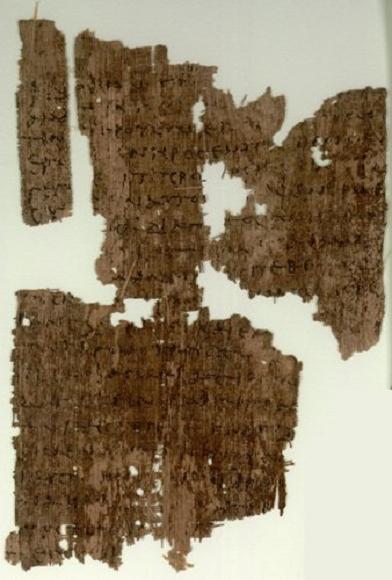| Change to Book/Chapter View |
|
|
|
Translation process is ongoing. For current status see details |
|
|

Papyrus 106 Discovered: Oxyrhynchus, Egypt Location: Sackler Library, Oxford, England Contents: John 1:29-35, 40-46
John 1 29 The
next day, he saw Jesus coming to him, and said,
“Behold, the Lamb of God, who takes away the sin of the world! 30 This
is he of whom I
said, ‘After me comes a man who is preferred before me, for he was before me.’
31 I didn’t know him, but for this reason I came
baptizing in water: that he would be
revealed to Israel.” 32 John testified, saying, “I have seen the Spirit descending like a dove out of heaven, and it
remained on him. 33 I
didn’t recognize him, but he who sent me to
baptize in water said to me, ‘On whomever
you will see the Spirit descending and remaining on him is he who
baptizes in the Holy Spirit.’ 34 I
have seen, and have testified that this
is the 35 Again, the next day, John was standing with two of his disciples, [..] 40 One
of the two who heard John and followed
him was Andrew, Simon Peter’s brother. 41 He first found his
own brother, Simon, and said to him, “We have found
the Messiah!” (which is, being interpreted, Christ). 42 He brought him
to Jesus. Jesus
looked at him, and said, “You are Simon the son of 46 Nathanael said to him, “Can any good thing come out of Nazareth?” Philip said to him, “Come and see.”
|
How to read these pages: • The
translation to the left is based on the World English Bible. Words in regular
black font are words in the manuscript matching the Majority Text for that
passage. • Words
in italics cannot be seen in the manuscript, since the manuscript is
fragmentary. These words are supplied for readability by the World English
Bible translation. • Words
present in the manuscript but with some letters unreadable or missing are in blue
like this: blue. One Greek word often is
translated into multiple English words, and when this occurs, all the English
words are in blue. • Words
present in the manuscript but with spelling or trivial word order differences that do not affect the
meaning are in green like this: green. • If
the manuscript is different from the Majority Text, words in the Majority
Text that are missing from the text of the manuscript are marked through in red
like this: • If the manuscript is different from the Majority Text, words in the manuscript that are not in the Majority Text are underlined in red like this: new words.If the manuscript differs from the Majority Text yet matches another well-known text, this is noted in the footnotes.
|
